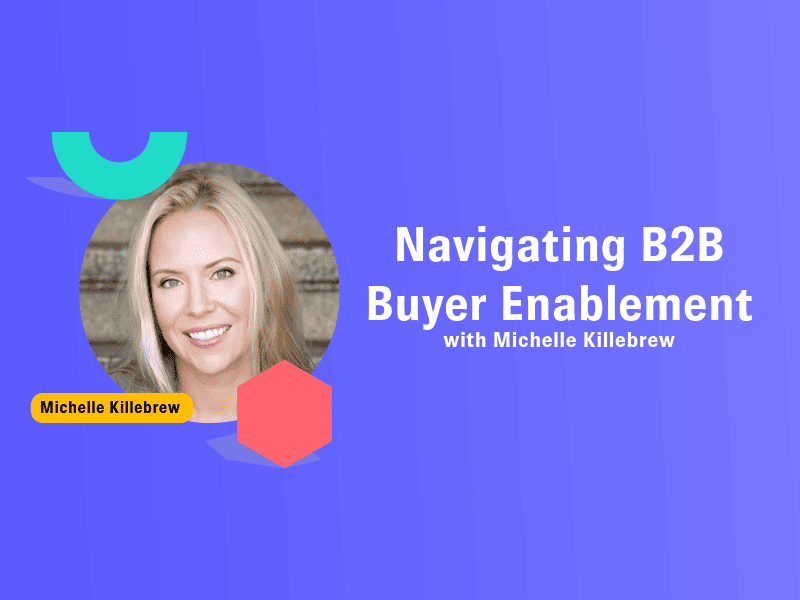
Navigating B2B Buyer Enablement With Michelle Killebrew
Navigating B2B Buyer Enablement With Michelle Killebrew
As a marketing leader (and a revenue marketer at heart) it’s my job to take all of the marketing levers we have to help a company grow. Part of that is finding the appropriate marketing strategy to support the business where they need it most, and the other part is making it as easy as possible for a buyer to buy. “How can I best serve my buyer” is what every marketer should be asking themselves before they launch into any tactic that could affect the buyer’s journey.
Here are a few ways I keep my buyer’s experience top of mind:
Buyers are more informed than ever—keep it that way.
We know that 80% of the buying decision is made before a buyer even engages with a salesperson, and only 17% of the buyer journey is spent connecting with sellers. Businesses—and particularly marketers—have to provide an enriching online experience that differentiates from competitors.
If you have a buyer that’s actively consuming content and they’re looking for that next piece of that content to go deeper — give them more when they’re already in research mode. You’ve already got their attention so you need to keep it. Invite your buyer to re-engage without overwhelming them. Meet them where they are and give them as much as the content that they can consume.
Your buyer is the one that perpetuates your brand—you need to provide an experience that makes them elevate your brand for you.
Map your buyer’s decision-making process.
A critical aspect of the go-to-market strategy involves mapping out the buyer’s decision-making process. Ask yourself: what business challenges are buyers trying to overcome? What issues are buyers trying to solve? How can we, the marketers, create content that helps solve that? There are other intricacies at play, too, that go beyond researching if your software will solve their business issue: interactions with procurement, involvement with CFOs, and consideration of price thresholds are all interaction points that can be overlooked in a standard buying journey.
We know that once they reach the bottom of the funnel, they more than likely have a vendor in mind—so it’s crucial to meet your buyer at every touchpoint in the process.
Unify marketing and sales.
Elevating the relationship between marketing and sales is a cornerstone of my role as a marketing leader. Personally, I approach this by having the Business Development Representatives (BDRs) sit within the marketing team, and this is to ensure that sales only receives warm and vetted leads. Without a clear relationship between sales and marketing, that’s when the leads get tossed “over the fence”, reducing the quality.
Under my leadership, BDRs do a warm pass-off meeting with the seller and the prospective buyer, then actively monitor and shepherd leads through the sales process with the Sales team, at least through to opportunity value. This is for accountability, rapport building, and metrics. There are a lot of ways to measure the quality of an MQL, and there are a lot of technologies and lead scoring frameworks to help, but the best way to gauge the sales readiness of a buyer is through qualitative feedback and conversation.
Stay aware of (but not distracted by) marketing trends.
It’s always good to stay on top of new trends and technologies in B2B marketing, but they have to be the right fit for your team and your business. In my previous company, we’d approach marketing trends as a way to upskill and gauge as a group how they can help grow the business. We took a grassroots approach and created an internal community where people could share and apply new trends to special projects. These were initiatives outside of business as usual, that brought different team members together to focus on a new concept or pilot. This effort increased morale, was a great team building exercise, and allowed us to explore new and innovative marketing ideas together and in the context of our business.
